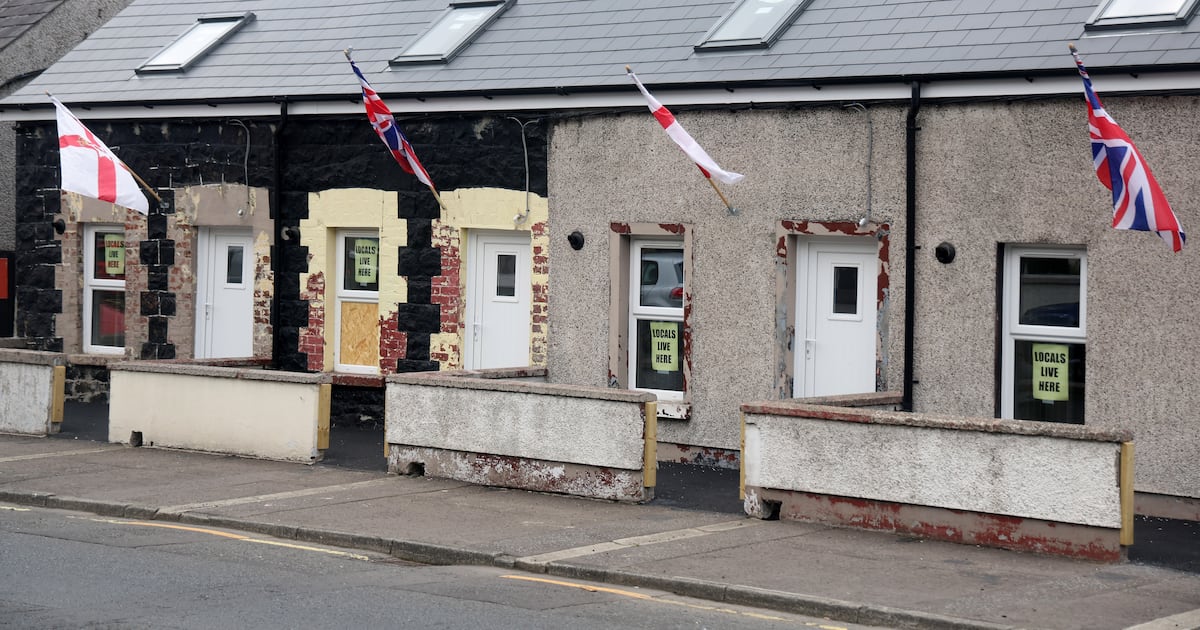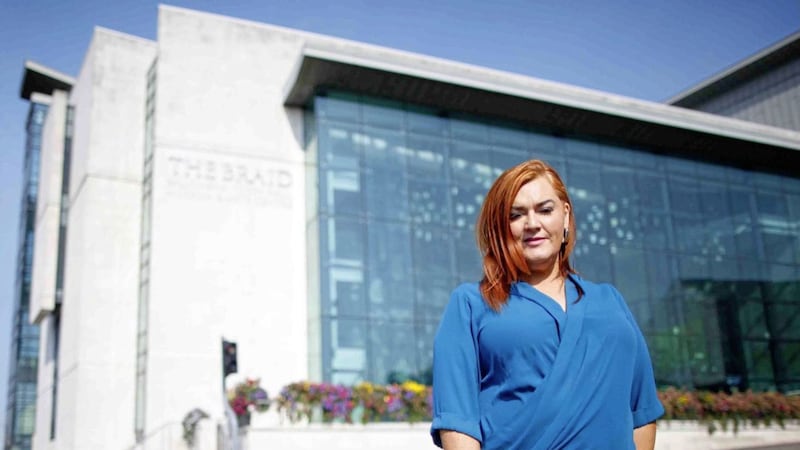The streets of Ballymena are silent now, gone are the TV crews and images of burnt out homes as anti-migrant violence gripped the Co Antrim town in recent weeks.
What remains is an uneasy eeriness and home after home with signs displaying ‘Locals Live Here’
Union flags, Ulster banners, Northern Ireland football shirts, royal bunting, an photos of King Charles are placed on windows up and down streets in parts of the town.
The emblems mirror the biblical marking of Passover doors with the blood of a first born – designed to tell outsiders that Ballymena’s ‘chosen people’ dwell within.
Many houses displaying emblems, flags or union jack stickers are also adorned with chipboard, an uneasy sign that this home was perhaps too late in displaying the appropriate amount of ‘Britishness’ for the rampaging mobs – the flags and signs now alongside the protective timber, acting as an insurance policy against further damage.
Indeed, there are entire streets, whole areas of the town where almost all of the home are adorned with some form of protection symbol – row after row, street after street.
When we visit many homes on a weekday afternoon curtains twitch, dogs bark, but nobody comes to the door as an air of foreboding lingers – a town wondering if it is yet safe to pick up the pieces and tend to the wounds and hurt caused by the recent violence.
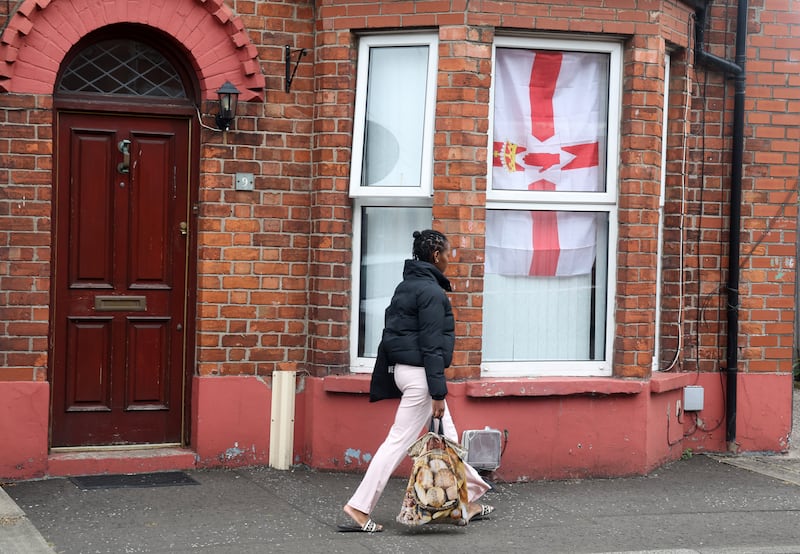 A flag hangs in Ballymena following anti-migrant intimidation earlier this month. PICTURE: MAL MCCANN
A flag hangs in Ballymena following anti-migrant intimidation earlier this month. PICTURE: MAL MCCANN
Shiva Thavamazar is 23-year-old Nepalese factory worker who has lived and worked in the town with his wife for over a year.
“Before the riots, we felt safe, but during the riots we were very scared, when we came from work, we felt scared and we couldn’t sleep because we afraid that they would break the doors and windows,“ he said.
Mr Thavamazar says that the couple are now sleeping again and have no plans to leave as they work in the town, however, he says that the riots have made them feel uneasy about their adopted home.
“Our view of Ballymena has changed – we felt completely safe here before, and even though things are peaceful again now it doesn’t feel the same way.”
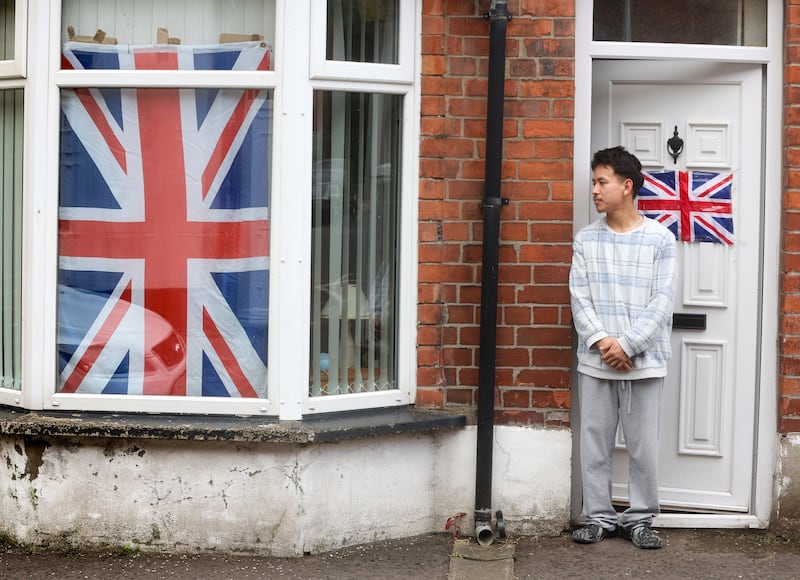 Shiva Thavamazar, a local migrant worker feared that the home where he and his wife lived would be attacked PICTURE: MAL MCCANN
Shiva Thavamazar, a local migrant worker feared that the home where he and his wife lived would be attacked PICTURE: MAL MCCANN
We meet another local man who says he supported the protests but admits that he and his neighbours have all put notices and British flags in their windows to stop their homes being targeted and are afraid now to take them down.
“We’ve been speaking to a lot of the neighbours, they all feel the same, keeping the notices up on the window,” he said.
The Ballymena man who did not want his name included said that many in the area are keeping the emblems, flags, jerseys, symbols on their doors and windows “just in case”.
Speaking about the migrants living in the town, he said: “It’s not fair to be labelling them all the same really. There are lots of ones here working away.”
He says many people are afraid that trouble could flare up again in the town and that many migrants living in Ballymena “might feel unsafe but its just after the protests but before that they all were fine.”
Signs of the violence are everywhere along the grey residential streets of the town from which Paisleyism spawns.
Near the Paisley’s Free Presbyterian Church, an elderly woman advises us to not knock on her neighbour’s door, as they are migrant nurses, sleeping after a long night shift.
The local woman, who declined to give her name, admits that many foreign nationals living in the town probably feel unsafe following the violence and says that the protests “got out of hand”.
She told us that people are afraid that the protests may start again or that their homes could be targeted by the mobs.
Along the town’s Paradise Avenue, the terraced homes are pockmarked with ugly chipboard where glass once provided a veneer of safety from the outside world.
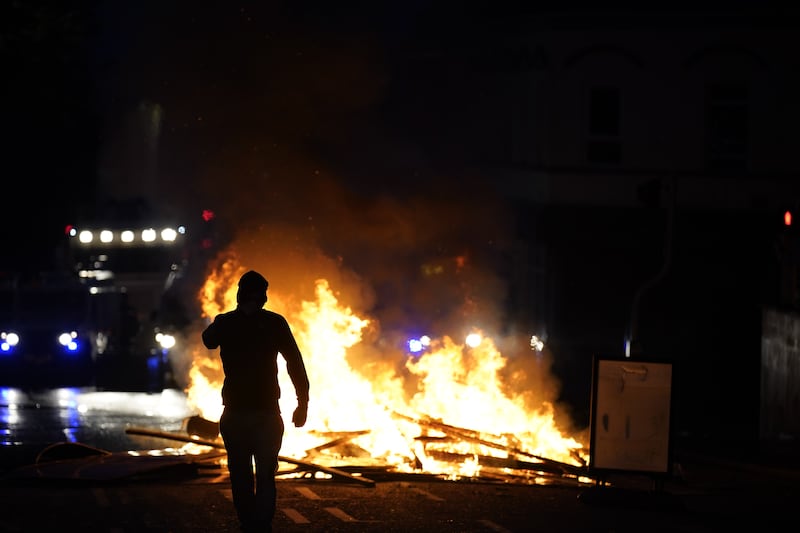 Violence started in Ballymena on Monday June 9 (Niall Carson/PA)
Violence started in Ballymena on Monday June 9 (Niall Carson/PA)
In Clonavon Terrace where much of the violence took place a removal crew can be spotted loading items into a van, the previous occupants having long since fled amidst the violence.
We spot a home adorned with Ulster Volunteer Force stickers on the windows and are greeted by a lady of Asian origin who was unable to speak with us as she was sleeping after working a night shift nearby.
The woman seems an unlikely supporter of the UVF, and has perhaps instead been advised that this is the type of Britishness she most display in order to keep her and her home safe from the mostly male rioters who claim their actions are designed to protect women.
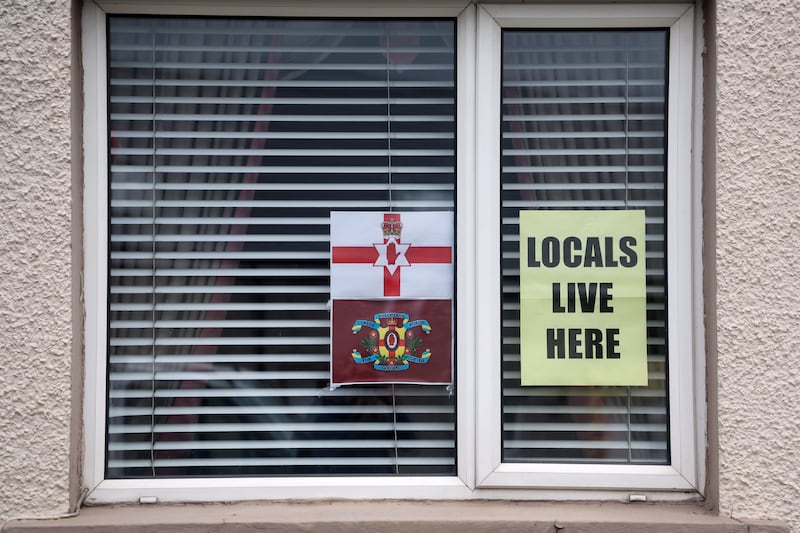 An Ulster Volunteer Force logo and other signs hang in the window of a Ballymena home following anti-migrant intimidation earlier this month. PICTURE: MAL MCCANN
An Ulster Volunteer Force logo and other signs hang in the window of a Ballymena home following anti-migrant intimidation earlier this month. PICTURE: MAL MCCANN
The climate of fear and uncertainty is palpable from both foreign nationals and lifelong Ballymena residents – both feeling helpless, trying to protect their lives, their homes and their families in any way that they can – a unifying factor in a place which has seen much division of late.
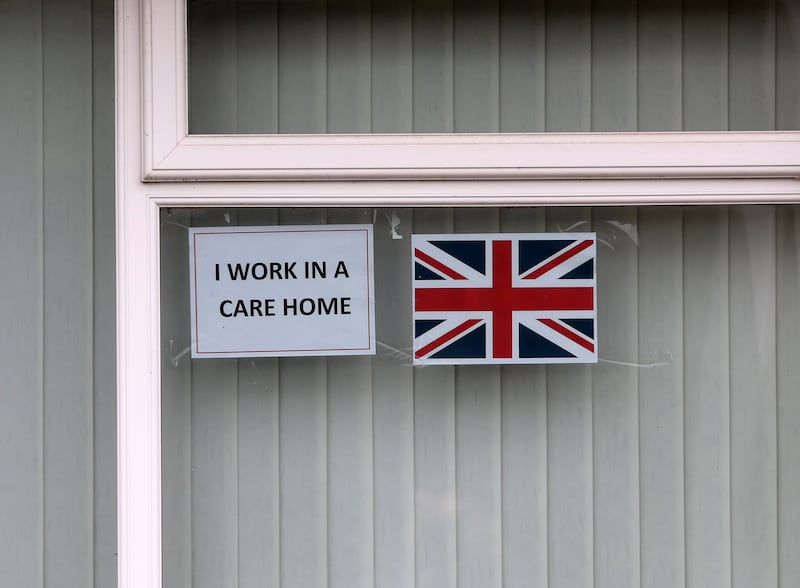 A notice and flag in the window of a home in Ballymena following anti-migrant intimidation earlier this month. PICTURE: MAL MCCANN
A notice and flag in the window of a home in Ballymena following anti-migrant intimidation earlier this month. PICTURE: MAL MCCANN
However, not everyone in the town feels the same.
One man from the Philippines told The Irish News that he had placed a flag outside his home in the hours following the protests but had since taken it in as things were “now calm”.
He spoke to us as he prepared to cycle to work at a nearby factory.
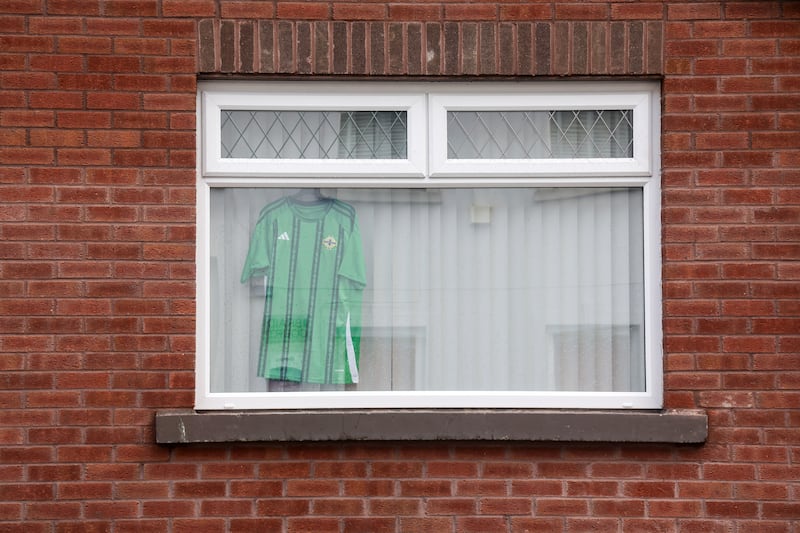 A Northern Ireland jersey hangs in the window of a home in Ballymena following anti-migrant intimidation earlier this month. PICTURE: MAL MCCANN
A Northern Ireland jersey hangs in the window of a home in Ballymena following anti-migrant intimidation earlier this month. PICTURE: MAL MCCANN
But he is one among many and overall the town exists in a climate of uncertainty – two communities living separate lives with the same worries, the same concerns, the same fears.
As we left the town we passed through the rain covered streets of the Harryville area – again each house adorned with emblems -each serving as a marker of supposed Britishness, a Hail Mary effort to keep their homes safe in Antrim’s ‘Bible Belt’.
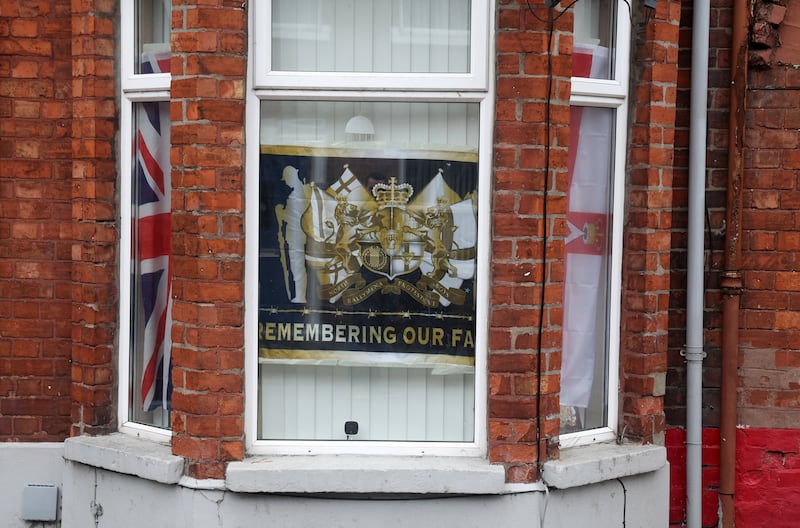 A home adorned with multiple flags for safety following anti-migrant violence in Ballymena earlier this month. PICTURE: MAL MCCANN
A home adorned with multiple flags for safety following anti-migrant violence in Ballymena earlier this month. PICTURE: MAL MCCANN
As we drive away, I speak on the phone with local Alliance councillor Jack Gibson who speaks candidly about how the violence has caused many hardworking migrants to flee their homes.
“A lot of people, if they could get out of Ballymena at the time, they did. You certainly don’t blame them,” he told The Irish News.
“Myself and colleagues within the party have unfortunately been helping some local organisations in helping some of the families who were affected by the riots leave Ballymena for good.
“I look at that and feel very sad because it feels like we’re losing — there are people who’ve come here trying to make a life for themselves who have been forced out, and that’s a very sad thing to see.
“It’s not hard to imagine — if you were in their shoes, if you were someone who’d come to the town and seen that outside your door, or in some cases inside your door, it’s not hard to imagine why you’d come to the conclusion that it’s better to leave.
“What we saw is going to change the way that you feel about a place.
“I know that for a lot of people I’ve spoken to — and to be honest, for myself as well — you see something like that happening in the place you live, in your own town, and it’s going to change your relationship with the place, fundamentally.
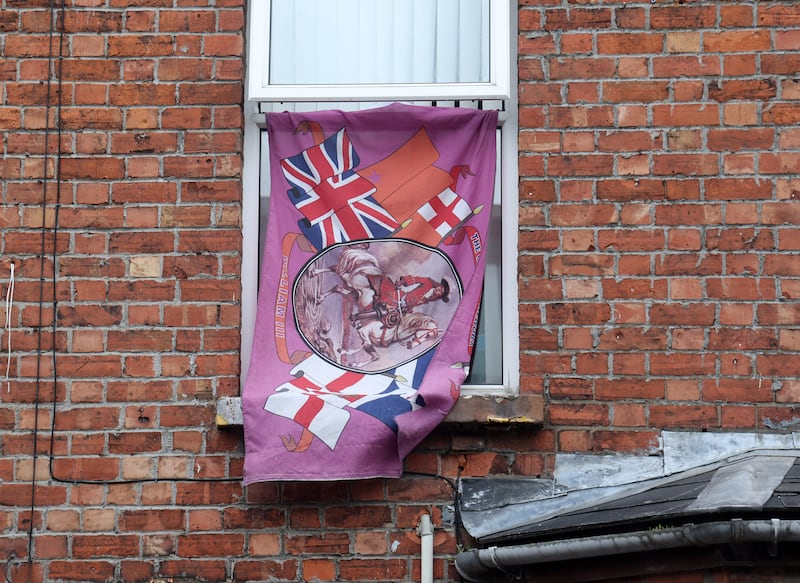 A flag hangs from a window in Ballymena following anti-migrant intimidation earlier this month. PICTURE: MAL MCCANN
A flag hangs from a window in Ballymena following anti-migrant intimidation earlier this month. PICTURE: MAL MCCANN
“Ballymena is a relatively affluent, prosperous and successful regional town and that is frankly built upon migrant labour.
“During the riots, you’d hear a lot of references to ‘illegals’ but a lot of the people who were being targeted and who have been terrorised by the riots are not illegals. They’re not here illegally — they’re here as migrant workers.
“I think there has to be a focus going forward on how we bring our communities together.”
